![]()
|
William Morley |
Location and period of operation:
|
William Morley |
Fenton |
1879 |
1906 |
|
Morley |
1906 |
1944 |
|
Earthenware manufacturer at the Salopian Works, Victoria Road, Fenton, Stoke-on-Trent, England
|
Subsequently: William Morley & Co.
Victoria Road
Fenton
Morley, Fox and Co., Ltd.,
earth'ware manufacturersfrom..... 1907 Staffordshire Sentinel
'Business Reference Guide to The Potteries, Newcastle & District'
Hand painted Morley Fox & Co jug
Art Deco style jug c.1938
Indian Tree pattern
Marks & initials used on ware for identification:
MF
c.1906+ (initial
superimposed - in a vase shape)
MORLEY, FOX
MADE IN ENGLAND
& COMPANY LTD
c.1920+
MADE IN
M F & Co LTD
ENGLAND
c.1920+
trade names:
HOMELEIGH
WARE
c.1929+
CROWN MANOR WARE
c.1938+
MORLEY WARE
MADE IN ENGLAND
c.1938+
|
|
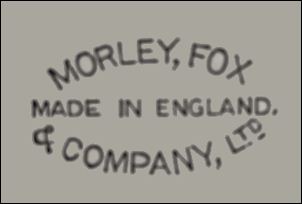 Morley, Fox & Company Ltd Made in England 1920 - c.1938 |
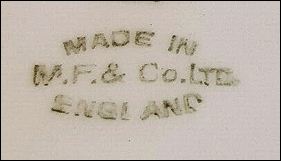 M F & Co Ltd Made in England 1920 - c.1938 |
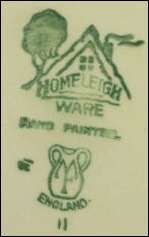 Homeleigh Ware hand painted MF England HOMELEIGH Mark c.1929+ |
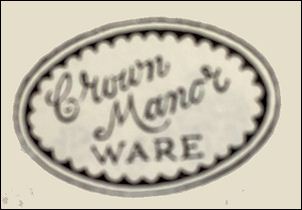 Crown Manor Ware c.1938+ this mark was continued by |
MORLEY WARE Mark
this mark was continued by |
Details of the Salopian Works
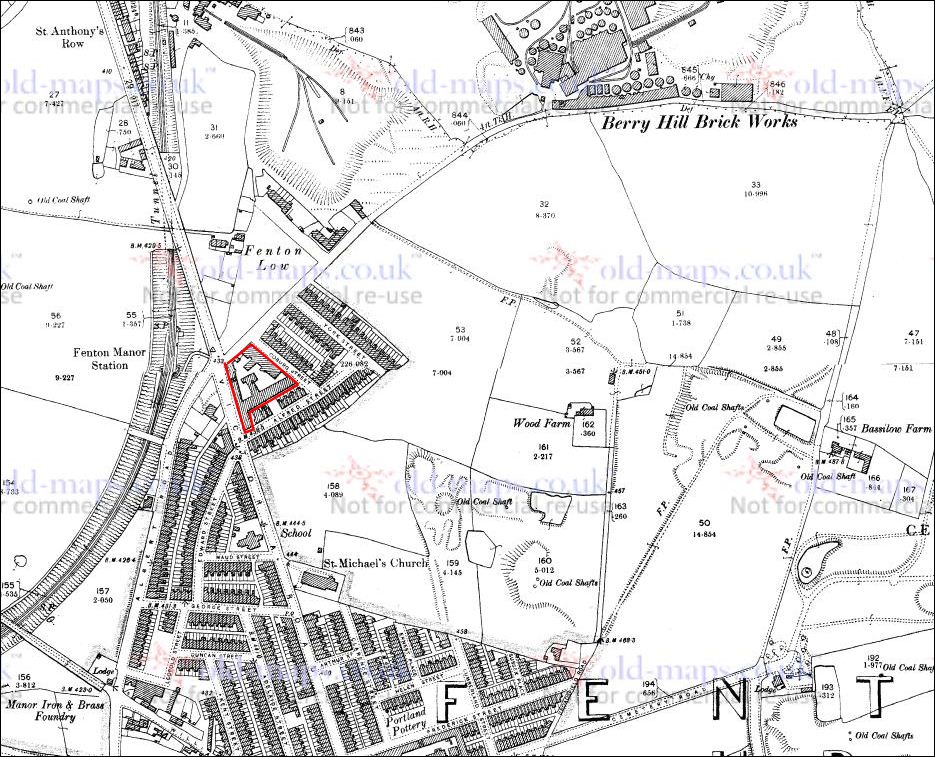
1900 OS map of the Fenton Low
area
showing the Salopian Works
alongside Victoria Road
Other pottery factories, brick works, old coal mines can be seen in the area
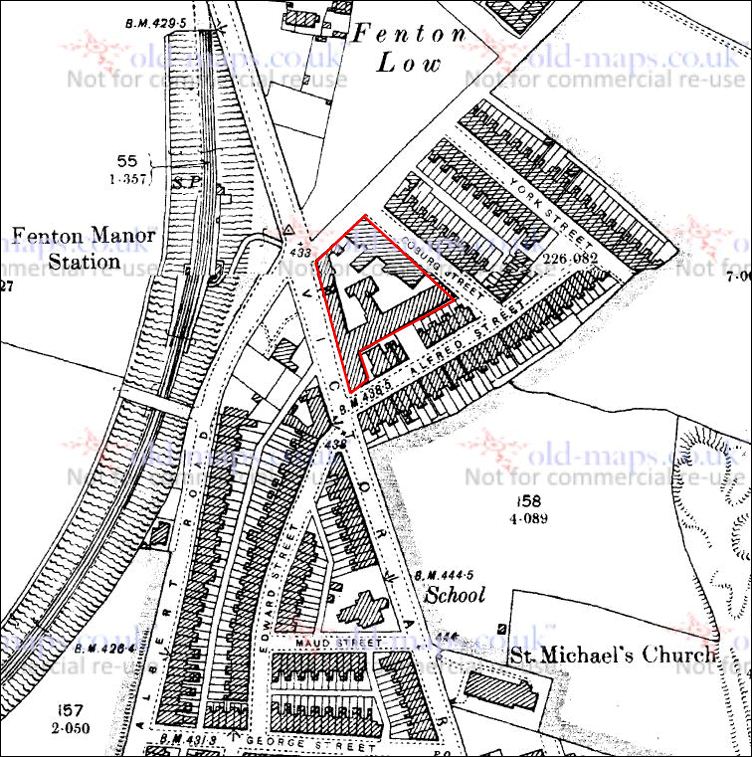
closer view of the 1900 OS map
of the Fenton Low area
showing the Salopian Works
alongside Victoria Road
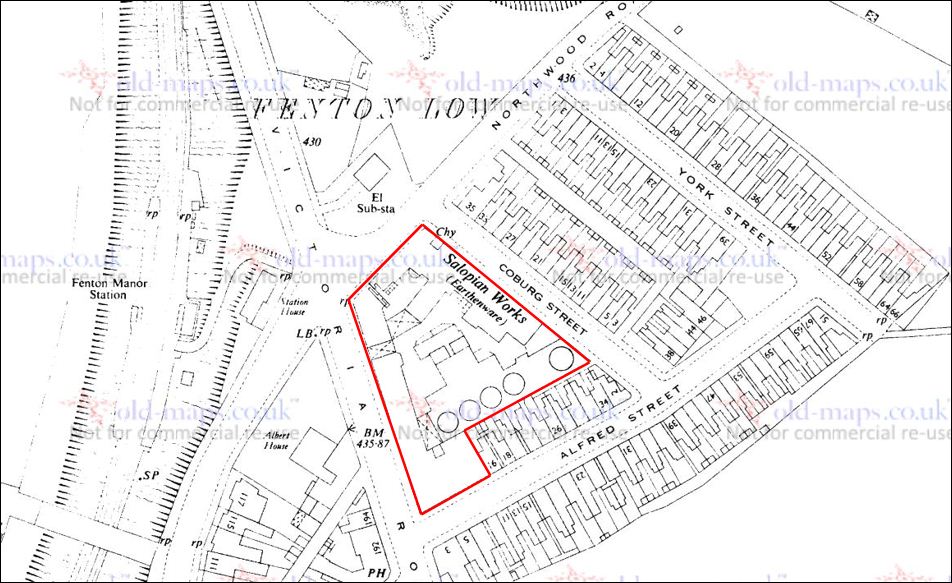
1953 OS map of the Fenton Low
area
showing the 5
bottle ovens of the Salopian Works
the factory fronts Victoria Road and is bounded by
Northwood Road, Alfred Street and Coberg Street
the substation shown in the
photo below can
be seen on this map at the top end of Coburg Street
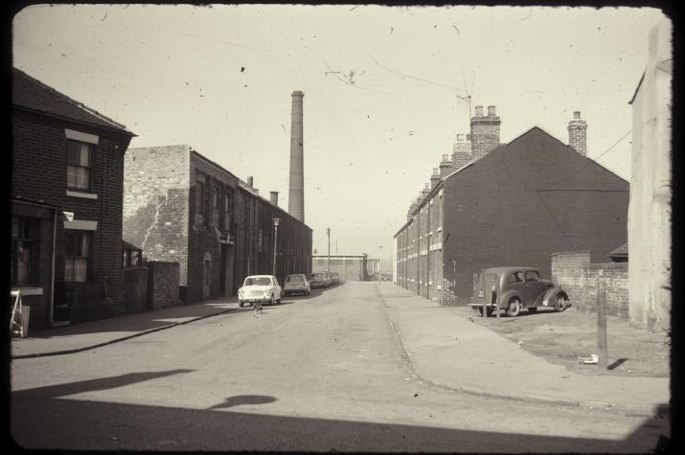
the Salopian Works alongside
Coberg Street
photo: March 1965
Courtesy: Staffordshire Past Track
| Description:
The camera is looking northwards from the corner of Alfred Street along
Coburg Street. Alfred Street runs off Victoria Road, but Coburg Street
has been redeveloped and is now renamed Hayfield Crescent. Coburg Street
was laid out in the 1880s with terraced houses on the right, and
opposite, the Salopian Pottery. The single storey building at the bottom
of the road is the electricity sub station on Victoria Road.
The Salopian Works were occupied by Morley Fox & Co from 1906 until 1957, making a wide range of earthenware. In the photograph, many of the windows are bricked up. The works have subsequently been demolished and replaced by a mix of houses and bungalows along Hayfield Crescent. |
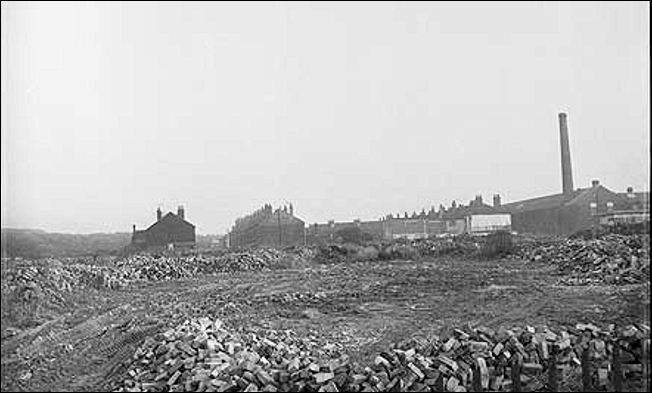
the Salopian Works from the
Fenton Low Brickworks
photo: 1965-68
Courtesy: Eileen Deste - Copyright Historic England Archive
| Description:
A view looking south from Fenton Low Brickworks towards the terraces of
Dimmock Street and Coburg Street with Morley Fox & Company's
Salopian Works visible to the right of frame.
The single storey building in the middle far right is the electricity sub station on Victoria Road. In the mid 1950s York Street was renamed Dimmock Street. When the Salopian Works were demolished and replaced by housing Dimmock Street and Coburg Street were both renamed Hayfield Crescent. |
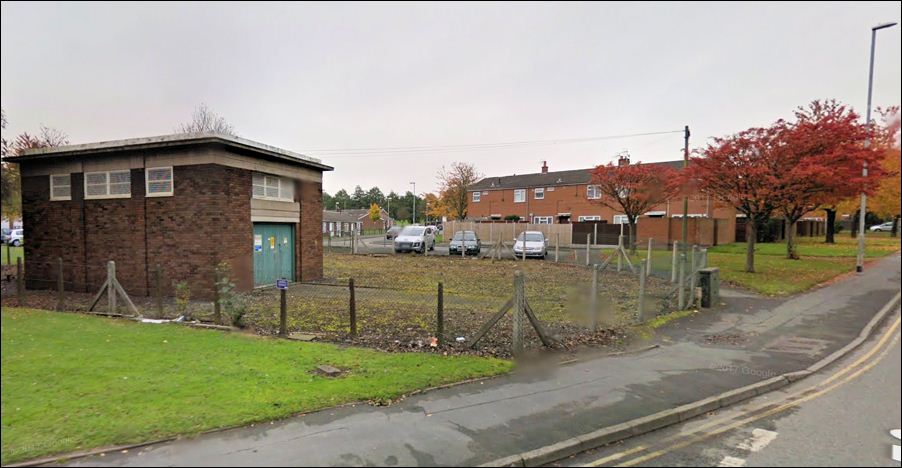
view from Victoria Road, the
electricity substation to the left
the houses to the right occupy the site of the Salopian Works
Google Street View 2011
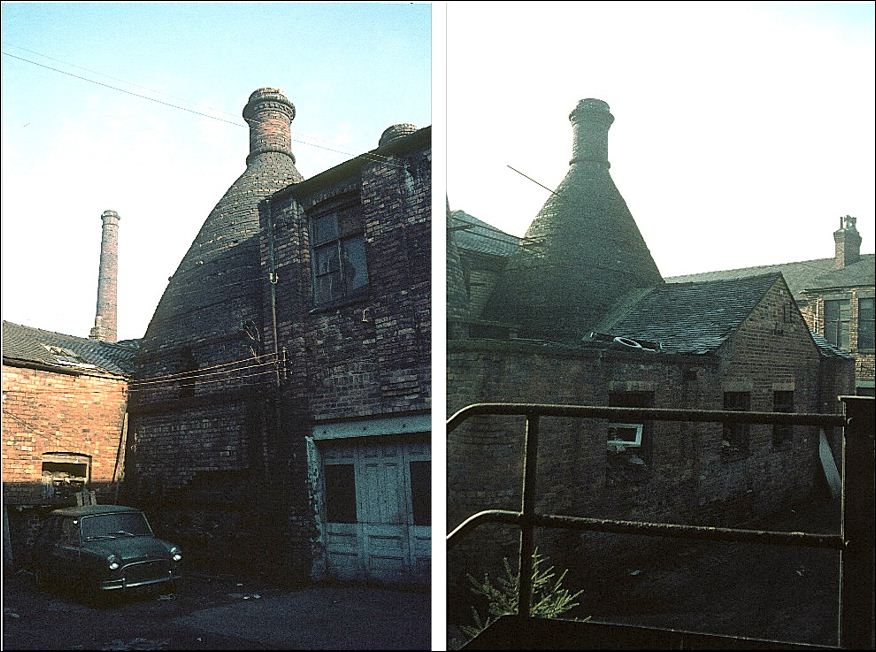
bottle ovens of the Salopian
Works of Morley Fox & Co
photo: 1976 - Terry Wooliscroft collection
Questions, comments, contributions? email: Steve Birks